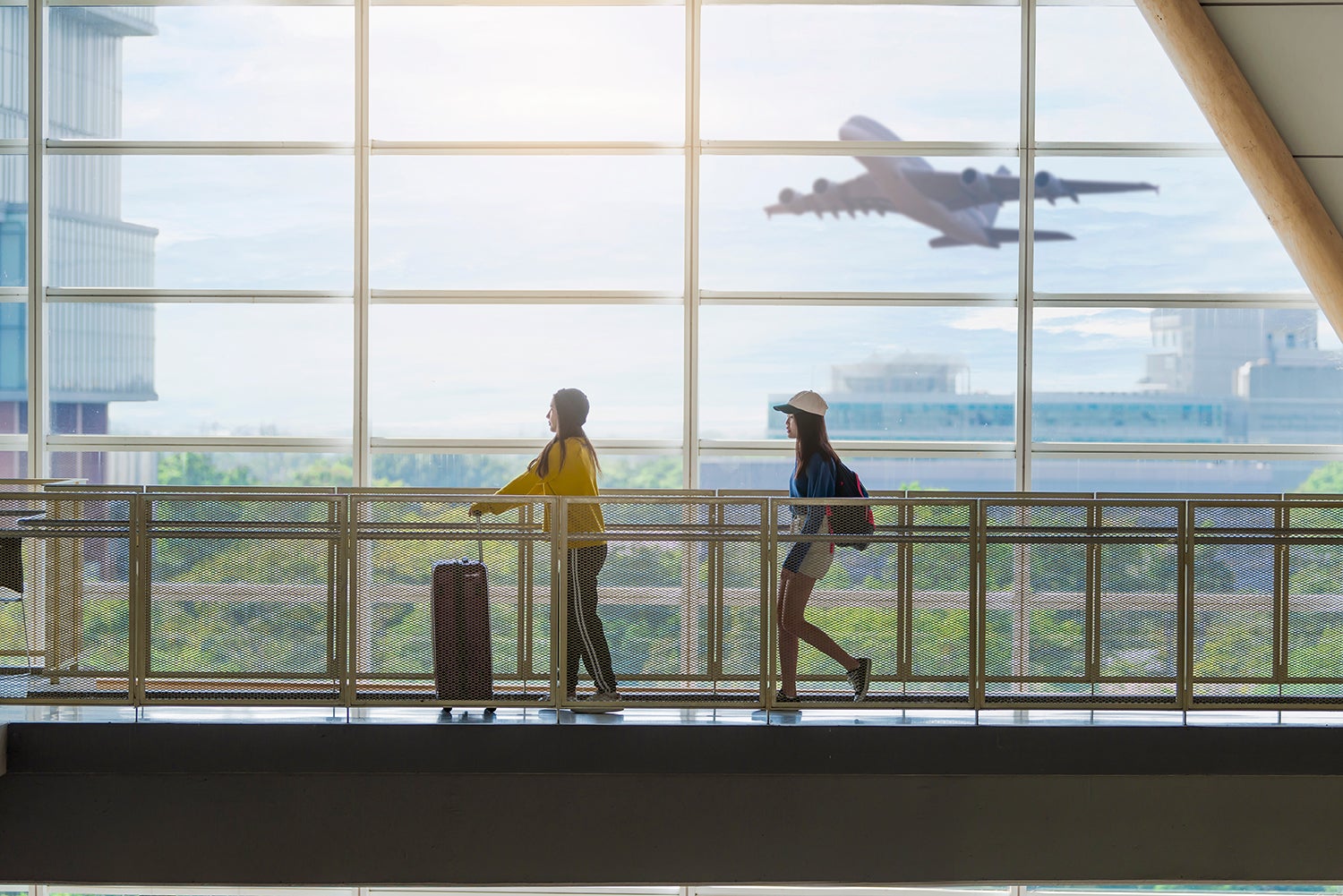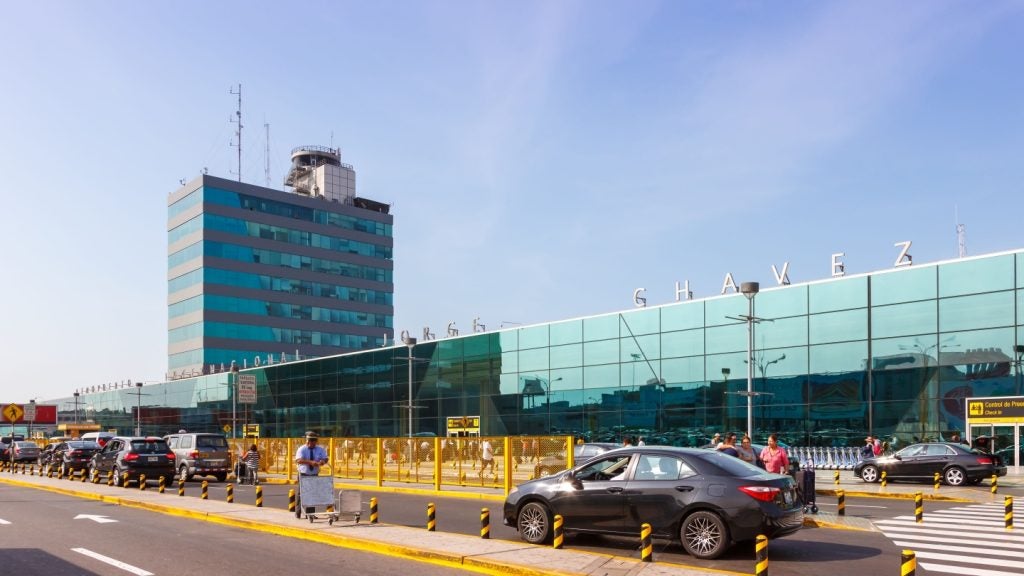
According to research published by IATA, airport passengers’ top priority for post-pandemic travel is convenience. The study found that 75% of passengers want to use biometric data instead of passports and boarding passes, and over a third have already experienced using biometric identification in their travels – with an 88% satisfaction rate.
Convenience is just one of the considerations that airports must take on board as they strategise for 2023 – but what else is on the list? We hear from industry experts and find out their thoughts on what 2023 holds for airports around the world including new technology, sustainability, baggage issues, and more.

Yannick Beunardeau, SVP airport & airline operations EMEA, Amadeus
“As travel demand continues to rebound, airlines and airports will focus on promoting a more enjoyable passenger experience. From check-in to passing through security, travellers are already using biometric technology at airports globally.
“In November 2022, British Airways announced a major biometric trial at Heathrow Terminal 5 using Amadeus technology. The airline is upgrading its end-to-end passenger experience with biometric technology, offering passengers the option to enrol for biometrics at home or via kiosks in the terminal. As biometrics removes the need for manual document checks it reduces the time taken at check-in, bag drop, and boarding. We expect to see more airlines and airports collaborating to deploy biometrics this year.
“In 2023 and beyond, we may also see biometrics used for payments made at the airport. If passengers leverage biometrics to check in, drop off luggage, and board the plane, then these identity checks could double up to cover payments the passenger might choose to make for ancillary services or upgrades, further removing friction. Examples could include adding an in-flight meal, upgrading to business class, or purchasing lounge access.”
See Also:

Paul Le Blond, chair of the Chartered Institute of Logistics and Transport’s aviation policy group
“2023 should be another interesting year for UK airports. Recovery is patchy, with overall passenger numbers probably reaching 80-90% of 2019 levels. Some airports are doing better, others less well. Air freight tonnes will also be depressed, mainly because of the worldwide economic situation.
How well do you really know your competitors?
Access the most comprehensive Company Profiles on the market, powered by GlobalData. Save hours of research. Gain competitive edge.

Thank you!
Your download email will arrive shortly
Not ready to buy yet? Download a free sample
We are confident about the unique quality of our Company Profiles. However, we want you to make the most beneficial decision for your business, so we offer a free sample that you can download by submitting the below form
By GlobalData“At London Heathrow, we will probably not see any public pronouncements about a third runway, but some details of the development of a two-runway airport may be revealed. London Gatwick is planning to submit its Development Consent Order for the northern runway, possibly leading to an inquiry later in the year. This will be significant as the first major inquiry for an NSIP [Nationally Significant Infrastructure Project] where major national issues such as carbon emissions may come to the fore. London Gatwick will also see the completion of the major upgrade to its rail station.
“A couple of decisions are awaited on judicial reviews at Bristol and Manston. Other airports around the country are investing in upgrades and improvements, such as at Leeds Bradford and London Stansted, and a new station is to open at Inverness. In general, airports will be trying to make sure that they provide the facilities and service levels required without major disruption.”

Zivan Gvozdenovic, mobility SVP, Endava
“While data is already central to the way that an aircraft is maintained to assure safe flights and identify issues, data is yet to be fully utilised more widely across aviation operations to streamline workflows and improve decision making.
“Coming through the next five years with revenue and momentum will rely on this approach of monitoring, analysing, and optimising operations by integrating data flows for every part of the business. Ultimately, if the industry is to overcome inertia within the system, efficiencies need to reach beyond areas such as fleet management to the passenger experience, baggage, catering, staffing, scheduling, and beyond.
“Embracing intelligent automation across operations to support the human roles and responsibilities can also be a crucial tactic for playing the long game of operational efficiency.
“Whether it’s harnessed to free staff from manual ID checks, optimise staffing levels, or equipping them with the insights to effectively handle fluctuating passenger numbers and baggage loading demands; data-driven processes not only streamline workflows – they can support frictionless workforce experiences too. The outcome can improve staff engagement, while also contributing to overall passenger satisfaction.”

John Grant, partner, MIDAS Aviation
“Sustainability and operational efficiency are going to be the key themes for 2023 and beyond. Airlines, airports, and everyone in the travel ecosystem are focused on sustainable aviation and throughout the year, we should expect to see groundbreaking initiatives around alternate power solutions, intermodal connectivity and even perhaps commercial EVOL services being launched to airports.
“Sustainability has to be achieved at a commercially effective price; airlines, airport customers, and suppliers will not be able to absorb increased costs as part of such initiatives and airports will in parallel need to seek even more efficiencies in their operation. Areas of future business efficiency include increased use of biometric data, increased operational automation, and potentially even robotic operations in some larger airports.
“Perhaps the greatest challenge will be attracting new resources to the industry and airports. The pandemic created a massive hole of lost experience in an industry where its greatest asset – the people – had become devalued. In 2023, airports should start rebuilding the attractiveness of careers in aviation and the diversity of skills and knowledge required. It may mean that some costs increase, but ultimately filling those resource gaps will safeguard airports and their futures for years to come.”

Randel Darby, CEO and founder, Airportr
“Great strides are being made across the industry to help meet the ambitious target of net-zero by 2050, including some excellent initiatives like British Airways’ use of recycled cooking oil fuel to cut jet emissions.
“In fact, data on investment trends by Lufthansa Group’s Innovation Labs highlighted VC investment in travel and mobility tech as some of the big winner categories post-pandemic, with traditional ground transportation categories, like ride-hailing, taking a hit. However, there are wider processes and operations on the ground which can all be made more sustainable but are often overlooked.
“One of the industry’s most stringent, tangible and immediate targets is to change the way people get to the airport, by encouraging the use of public transport. The concept of intermodal, fully connected travel, where passengers combine multiple forms of transport to get to where they’re going, is not a new concept – but it is one that the industry needs to encourage as much as possible.”

Sherry Stein, Americas head of technology, SITA
“The air transport industry is at a post-pandemic crossroads, facing challenges from all sides. While domestic and international travel recovery accelerates globally, airports and airlines are scrambling to provide the seamless travel experience passengers expect, often with slashed workforces and squeezed budgets. A major trend to help navigate the changing aviation and airport landscape in 2023 is that of digital identity.
“Younger generations of travellers demand a more integrated digital journey, and the industry will be forced to respond. Constantly utilising technologies, these travellers will accelerate the digital way of life. Many are frequent travellers who are ‘self-service first’, and they embrace biometrics and digital passes to benefit from travel efficiency and convenience and enhance their overall travel experience.
“Digital identities, border crossings, and mobile platforms offer ample opportunities for younger digital native travellers who are familiar with using their mobile phone as a remote control for travel; market share will increase as digital natives become a more significant proportion of the passenger demographic, creating a seismic shift towards ‘digital first.’
“The combination of digital identities with a self-service technology infrastructure provides a seamless, touchless, and personalised travel experience while allowing travellers to remain firmly in control of their data.”








Related Company Profiles
British Airways Plc
Endava PLC
SITA NV